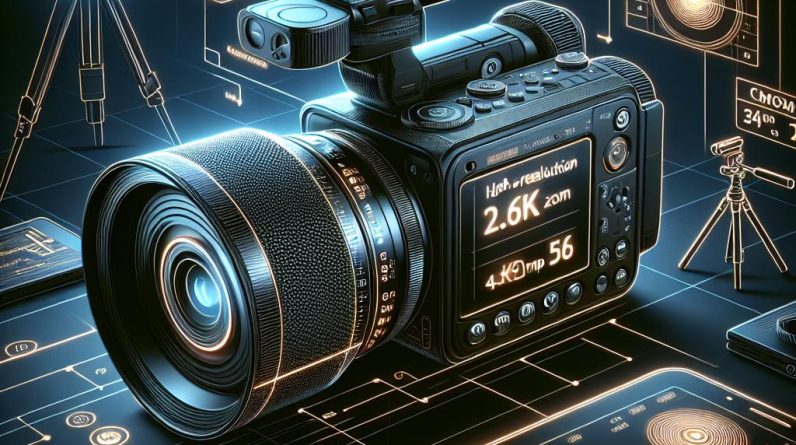Dive into the fascinating world of quasicrystals, structures that defy conventional crystal theory! 🌌 In 1982, Dan Shechtman’s groundbreaking discovery revealed patterns of matter that are beautifully ordered yet never repeat. From stunning electron microscope visuals to industrial applications, join us as we explore these extraordinary structures that earned Shechtman the Nobel Prize in Chemistry in 2011. Discover how quasicrystals are influencing technology—from solar cells to surgical tools!
🔍 Want to learn more about the wonders of science? Hit that subscribe button and share your thoughts in the comments!
#Science #Quasicrystals #NobelPrize #Innovation #MaterialScience
Unlocking the Secrets of Quasicrystals: A Nobel Discovery 🌟
What are quasicrystals?
Quasicrystals are unique materials that exhibit a non-repeating structure, defying the conventional rules of crystallography.Unlike ordinary crystals, which have a periodic arrangement of atoms, quasicrystals possess an ordered pattern that lacks translational symmetry. This captivating property leads to their striking beauty and intriguing physical characteristics.
The Nobel Prize-Winning Research
In 2011, Dan Shechtman was awarded the Nobel Prize in Chemistry for his groundbreaking discovery of quasicrystals. His findings were initially met with skepticism,as they challenged the established perception of crystal structures. Shechtman’s work demonstrated that quasicrystals could form thru rapid cooling processes, leading to a state of matter previously thought impossible.
The Discovery process
- 1982: Dan Shechtman observes unusual diffraction patterns in rapidly cooled aluminum-manganese alloys.
- Initial resistance from peers highlights the controversial nature of the discovery.
- Extensive studies confirm the existence and properties of quasicrystals over the following years.
Understanding the Structure of Quasicrystals
Quasicrystals are frequently enough categorized based on their symmetry types. Notably, they can exhibit 5-fold, 8-fold, and other rotational symmetries, which are prohibited in classical crystallography. This unique arrangement stems from their atomic structure, often described through different tiling methods:
- Penrose Tiling: A non-repeating pattern formed by using two different shapes, resulting in an aperiodic structure.
- Einstein Tiling: Composed of quadrilaterals, allowing for complex arrangements that maintain a quasiperiodic order.
Properties of Quasicrystals
Quasicrystals exhibit a variety of remarkable physical properties:
- Hardness: Quasicrystals are often harder than their crystalline counterparts, making them suitable for various applications.
- Low Friction: The unique atomic arrangement gives rise to low frictional properties, making them ideal for lubricants.
- Thermal and Electrical Conductivity: Quasicrystals may display unusual heat conduction characteristics, leading to research in thermoelectric materials.
Applications of Quasicrystals
The extraordinary attributes of quasicrystals have led to a wide range of applications:
Industry and Technology
- Coatings: Used in toughening coatings for cutting tools and surfaces due to their hardness.
- LEDs: Potential submission in light-emitting diodes, enhancing efficiency and longevity.
- Medical Devices: Investigated for use in surgical instruments and body implants due to biocompatibility.
Art and Design
Quasicrystals also intrigue artists and designers. Their mesmerizing patterns challenge traditional aesthetics,leading to innovative art forms and architectural designs.
Benefits of Quasicrystals
The unique properties of quasicrystals offer several benefits:
- Durability: Enhanced durability due to their hardness results in longer-lasting products.
- Efficiency: Low friction properties contribute to energy-efficient machinery and tools.
- Novelty: The discovery of quasicrystals opens doors to new research areas and applications in materials science.
Case Studies and Frist-Hand Experience
Case Study 1: Quasicrystals in Coatings
A company specializing in precision tools reported a significant increase‌ in tool lifespan when utilizing quasicrystal coatings. This innovation reduced production costs and improved efficiency.
First-Hand Experience from Scientists
Many researchers engaged in quasicrystal studies express the thrill of working with these materials:
“The unexpected properties of quasicrystals push the boundaries of material science.Every day brings new discoveries!” – Dr. Emily Chen, Materials Scientist.
Challenges and Future Directions
Despite their potential, quasicrystals also face challenges:
- Synthesis Methods: Developing efficient and cost-effective production methods remains a significant hurdle.
- Understanding Mechanisms: Further research is needed to fully comprehend the mechanisms behind their unique properties.
Future directions for quasicrystal research may include:
- Nanotechnology: Exploring quasicrystals at the nanoscale for advanced applications in electronics and biotechnology.
- New Alloys: Inquiry into new metal combinations that can further enhance their properties.
Key Takeaways
Quasicrystals represent a revolutionary step in materials science, offering intriguing properties and applications. The story of Dan Shechtman and his Nobel Prize-winning discovery serves as a reminder of the importance of curiosity and scientific inquiry. As research continues, the full potential of quasicrystals is yet to be unlocked.
| Property | Description |
|---|---|
| Hardness | superior to many conventional materials |
| Low Friction | Ideal for lubrication applications |
| Unique Patterns | aperiodic arrangements that defy symmetry |
| biocompatibility | Suitable for medical implants |






